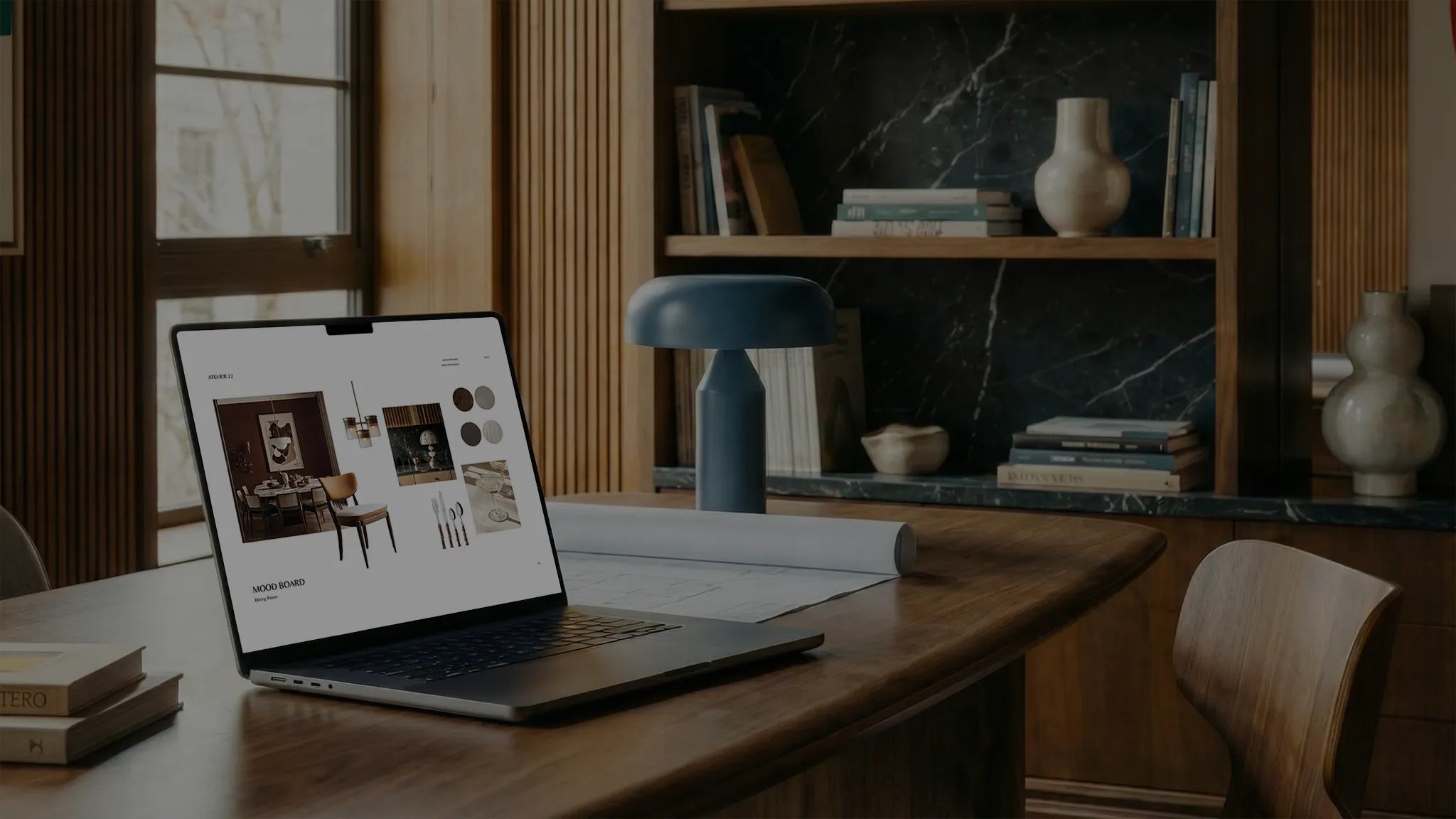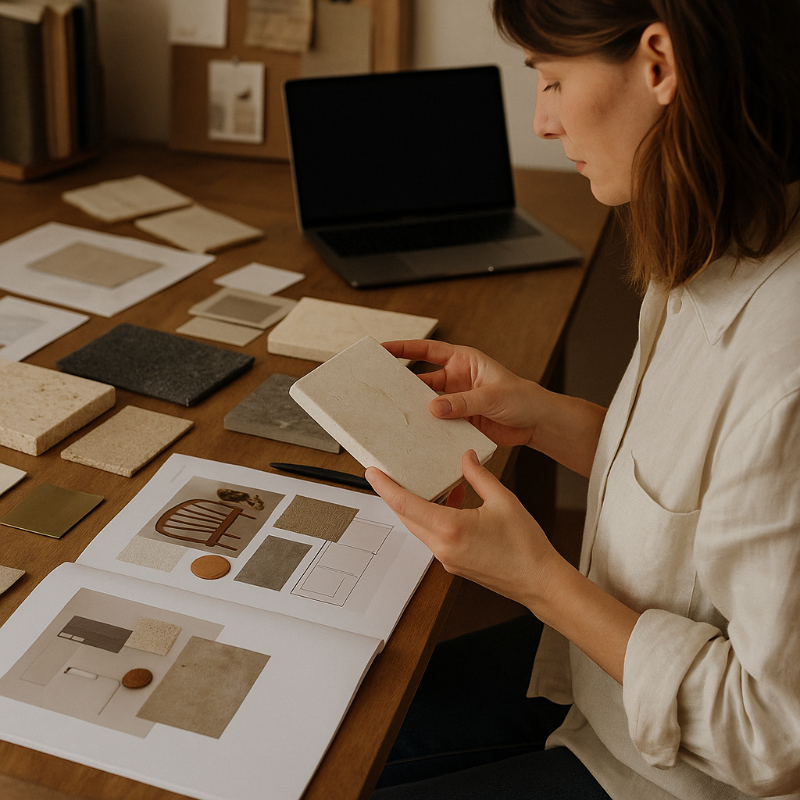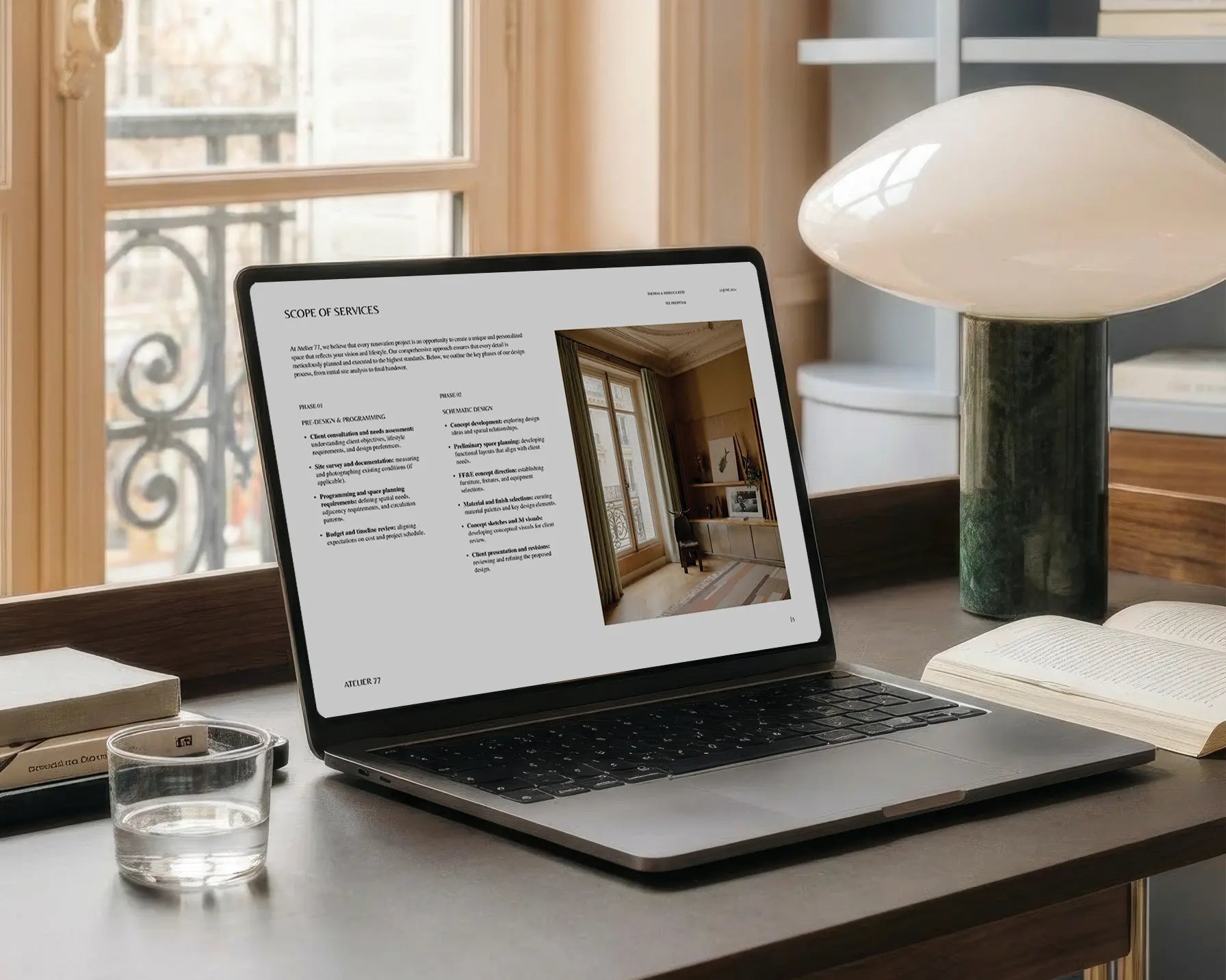How to Secure Client Sign-Off in Your Interior Design Presentations

Preparing a design presentation takes time. You gather the brief, build mood boards, refine layouts, and source materials. But the presentation itself is not just about showing the work. Its real purpose is to gain client sign-off so that you can move forward without circling back to old decisions.
Your fee proposal secures agreement on scope and budget. The presentation secures approval for the design direction. Both are forms of sign-off, but they serve very different purposes. Without client approval at each stage of your presentation, projects can stall, boundaries blur, and revisions mount up.
Why Sign-Off Matters
If a client leaves a meeting saying “we’ll think about it,” that is not approval. It is a delay that creates uncertainty. A week later, they might ask to change the palette. A month later, they might question the floor plan. What you thought was agreed is suddenly back on the table.
Asking for sign-off makes the process clear. The client knows where decisions have been made, and you know where you stand. This avoids repeated work and keeps the project moving forward.
Where Sign-Off Happens
There are three main stages in a design presentation where sign-off is essential.
The Brief
Begin by restating the agreed goals and scope. It may feel repetitive, but it confirms that both you and the client are still aligned. If there is disagreement here, the rest of the presentation cannot hold.
Concept Development
Mood boards, palettes, and inspiration images set the overall feel. This stage is about gaining approval for the direction, not debating finishes or fabrics. A clear “yes” at this point gives you the authority to begin sourcing.
Design Development
Layouts, elevations, 3D renderings, and lighting plans move the project from concept into detail. If the concept has been signed off, this stage becomes about refinement rather than rethinking. Sign-off here allows you to proceed into procurement with confidence.
Each stage acts as a checkpoint. Without approval, the next stage should not begin.
Sign-off does not happen when clients are confused or overwhelmed. Common issues include:
- Presenting too many options at once.
- Jumping between ideas without order or flow.
- Pushing ahead without confirming earlier decisions.
These situations leave clients hesitant. Instead of making choices, they stall, and you are left repeating the same discussions.
Structuring for Approval
A presentation works best when it tells a story. Instead of placing all visuals on the table at once, guide the client through the sequence of decisions that matter. Show them how the design supports the way they want to live. Invite them to picture themselves in the space. Then pause and confirm agreement before moving on.
The act of asking for sign-off is not about pressure. It is about clarity. Clients feel reassured that their input is acknowledged, and you gain a firm point of reference for the next stage. Many studios formalise this with a Client Feedback and Sign-off Form. It provides a clear place to record decisions, capture notes, and mark what is still open for revision. Without it, approvals often remain verbal and open to interpretation.
How a Template Helps
Creating this structure from scratch every time is demanding. A template gives you a framework that ensures consistency. It saves time and provides a proven order that clients can follow.
Sonderpath's design presentation templates are arranged around the three key stages of the process: the brief, the concept, and the design development. It is built to prompt sign-off at the right moments. With ready-to-use layouts, you can add your content quickly without losing time on design.
Pairing the template with the Client Feedback and Sign-off Form gives you both sides of the process: one guides the conversation, the other records the approvals. Together they provide a professional system that keeps projects moving forward without confusion.
When clients sign off with confidence, you can move into the next stage knowing that the work behind you is complete. That is what gives projects momentum. It protects your boundaries, reassures your clients, and keeps the design journey running smoothly from start to finish.

If you want to strengthen the way you present and secure approvals, explore Sonderpath’s Design Presentation Template and Client Feedback and Sign-off Form. They are designed to work together so your presentations inspire, your clients commit, and your projects stay on track.




